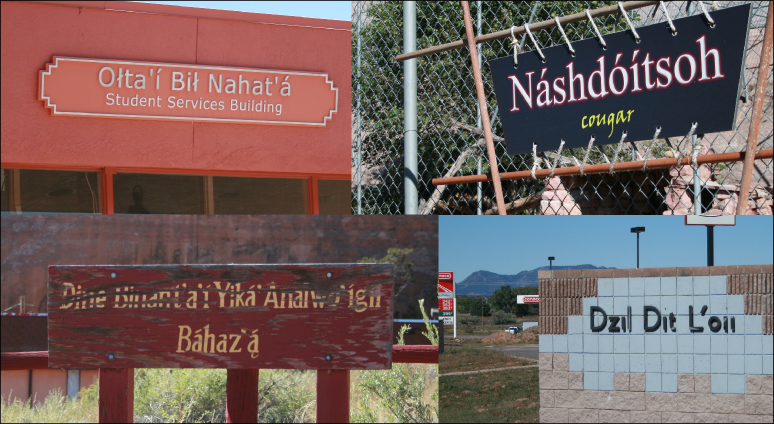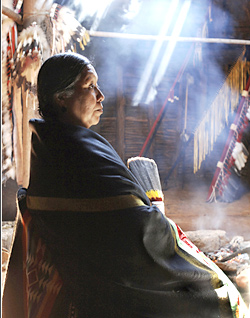|
Lipan Apache
Lipan Apache are a band of Apache, a Southern Athabaskan Indigenous people, who have lived in the Southwest and Southern Plains for centuries. At the time of European and African contact, they lived in New Mexico, Colorado, Oklahoma, Texas, and northern Mexico. Historically, they were the easternmost band of Apache.Swanton, ''The Indian Tribes of North America'', p. 301 Early adopters of horse culture and peyotism, the Lipan Apache hunted bison and farmed. Many Lipan Apache descendants today are enrolled members of the Mescalero Apache Tribe in New Mexico.Mescalero Apache Research Report (2020), p. 3. Other Lipan descendants are enrolled with the |
New Mexico
) , population_demonym = New Mexican ( es, Neomexicano, Neomejicano, Nuevo Mexicano) , seat = Santa Fe, New Mexico, Santa Fe , LargestCity = Albuquerque, New Mexico, Albuquerque , LargestMetro = Albuquerque metropolitan area, Tiguex , OfficialLang = None , Languages = English language, English, Spanish language, Spanish (New Mexican Spanish, New Mexican), Navajo language, Navajo, Keres language, Keres, Zuni language, Zuni , Governor = , Lieutenant Governor = , Legislature = New Mexico Legislature , Upperhouse = New Mexico Senate, Senate , Lowerhouse = New Mexico House of Representatives, House of Representatives , Judiciary = New Mexico Supreme Court , Senators = * * , Representative = * * * , postal_code = NM , TradAbbreviation = N.M., N.Mex. , area_rank = 5th , area_total_sq_mi = 121,591 , area_total_km2 = 314,915 , area_land_sq_mi = 121,298 , area_land_km2 = 314,161 , area_water_sq_mi = 292 , area_water_km2 = 757 , area_water_percent = 0.24 , ... [...More Info...] [...Related Items...] OR: [Wikipedia] [Google] [Baidu] |
Mescalero Apache Tribe
Mescalero or Mescalero Apache ( apm, Naa'dahéńdé) is an Apache tribe of Southern Athabaskan–speaking Native Americans. The tribe is federally recognized as the Mescalero Apache Tribe of the Mescalero Apache Reservation, located in south-central New Mexico. In the 19th century, the Mescalero opened their reservation to other Apache tribes, such as the Mimbreno (Chíhéńde, Warm Springs Apaches) and the Chiricahua (Shá'i'á-ńde or Chidikáágu). Some Lipan Apache (Tú 'édì-néńde and Tú ntsaa-ńde) also joined the reservation. Their descendants are enrolled in the Mescalero Apache Tribe. Reservation Originally established on May 27, 1873, by executive order of President Ulysses S. Grant, the reservation was first located near Fort Stanton (Zhúuníidu). The present reservation was established in 1883. It has a land area of 1,862.463 km² (719.101 sq mi), almost entirely in Otero County. The 463,000-acre reservation lies on the eastern flank of t ... [...More Info...] [...Related Items...] OR: [Wikipedia] [Google] [Baidu] |
Caddoan
The Caddoan languages are a family of languages native to the Great Plains spoken by tribal groups of the central United States, from present-day North Dakota south to Oklahoma. All Caddoan languages are critically endangered, as the number of speakers has declined markedly due to colonial legacy, lack of support, and other factors. Family division Five languages belong to the Caddoan language family: Kitsai and Wichita have no speakers left. Kitsai stopped being spoken in the 19th century when its members were absorbed into the Wichita tribe. Wichita stopped being spoken in 2016, when the last native speaker of Wichita, Doris McLemore (who left recordings and language materials), died. All of the remaining Caddoan languages spoken today are severely endangered. As of 2007, Caddo is spoken by only 25 people, Pawnee by 10, and Arikara by 10. Caddo and Pawnee are spoken in Oklahoma by small numbers of tribal elders. Arikara is spoken on the Fort Berthold Reservation in ... [...More Info...] [...Related Items...] OR: [Wikipedia] [Google] [Baidu] |
Pueblo Peoples
The Puebloans or Pueblo peoples, are Native Americans in the Southwestern United States who share common agricultural, material, and religious practices. Currently 100 pueblos are actively inhabited, among which Taos, San Ildefonso, Acoma, Zuni, and Hopi are the best-known. Pueblo people speak languages from four different language families, and each Pueblo is further divided culturally by kinship systems and agricultural practices, although all cultivate varieties of maize. Pueblo peoples have lived in the American Southwest for millennia and descend from Ancestral Pueblo peoples. The term ''Anasazi'' is sometimes used to refer to ancestral Pueblo people but it is now largely minimized. ''Anasazi'' is a Navajo word that means ''Ancient Ones'' or ''Ancient Enemy'', hence Pueblo peoples' rejection of it (see exonym). ''Pueblo'' is a Spanish term for "village." When Spaniards entered the area, beginning in the 16th-century with the founding of Nuevo México, they came acros ... [...More Info...] [...Related Items...] OR: [Wikipedia] [Google] [Baidu] |
Canadian River
The Canadian River is the longest tributary of the Arkansas River in the United States. It is about long, starting in Colorado and traveling through New Mexico, the Texas Panhandle, and Oklahoma. The drainage area is about .Dianna Everett, "Canadian River." ''Encyclopedia of Oklahoma History and Culture''. Retrieved October 7, 2013. The Canadian is sometimes referred to as the South Canadian River to differentiate it from the North Canadian River that flows into it. Etymology On |
Navajo People
The Navajo (; British English: Navaho; nv, Diné or ') are a Native American people of the Southwestern United States. With more than 399,494 enrolled tribal members , the Navajo Nation is the largest federally recognized tribe in the United States; additionally, the Navajo Nation has the largest reservation in the country. The reservation straddles the Four Corners region and covers more than 27,325 square miles (70,000 square km) of land in Arizona, Utah, and New Mexico. The Navajo Reservation is slightly larger than the state of West Virginia. The Navajo language is spoken throughout the region, and most Navajos also speak English. The states with the largest Navajo populations are Arizona (140,263) and New Mexico (108,306). More than three-fourths of the enrolled Navajo population resides in these two states. [...More Info...] [...Related Items...] OR: [Wikipedia] [Google] [Baidu] |
Navajo Language
Navajo or Navaho (; Navajo: or ) is a Southern Athabaskan languages, Southern Athabaskan language of the Na-Dene languages, Na-Dené family, through which it is related to languages spoken across the western areas of North America. Navajo is spoken primarily in the Southwestern United States, especially on the Navajo Nation. It is one of the most widely spoken Indigenous languages of the Americas#Northern America, Native American languages and is the most widely spoken north of the Mexico–United States border, with almost 170,000 Americans speaking Navajo at home as of 2011. The language has struggled to keep a healthy speaker base, although this problem has been alleviated to some extent by extensive education programs in the Navajo Nation, including the creation of versions of the films Finding Nemo and Star Wars dubbed into Navajo. The United States in World War II used the Navajo language to develop a system of Code talker, code talkers to relay messages that could not b ... [...More Info...] [...Related Items...] OR: [Wikipedia] [Google] [Baidu] |
Querecho
The Querechos were a Native American people. In 1541 the Spanish conquistador Francisco Vásquez de Coronado and his army journeyed east from the Rio Grande Valley in search of a rich land called Quivira. Passing through what would later be the panhandle of Texas he met a people he called the Querechos. This was the first known venture of Europeans across the Great Plains of the United States. Coronado and his chroniclers were the first Europeans to describe the buffalo-hunting nomads of the Plains. The Querechos were Apache Indians. Meeting the Querecho Coronado and his army found a Querecho settlement of about 200 "houses" on the Llano Estacado of the Texas Panhandle and adjacent New Mexico. On the Llano they also saw vast herds of buffalo or bison. According to members of Coronado’s expedition, the Querechos lived "in tents made of the tanned skins of the cows (bison). They travel around near the cows killing them for food....They travel like the Arabs, with their ... [...More Info...] [...Related Items...] OR: [Wikipedia] [Google] [Baidu] |
Chiricahua
Chiricahua ( ) is a band of Apache Native Americans. Based in the Southern Plains and Southwestern United States, the Chiricahua (Tsokanende ) are related to other Apache groups: Ndendahe (Mogollon, Carrizaleño), Tchihende (Mimbreño), Sehende (Mescalero), Lipan, Salinero, Plains, and Western Apache. Chiricahua historically shared a common area, language, customs, and intertwined family relations with their fellow Apaches. At the time of European contact, they had a territory of 15 million acres (61,000 km2) in Southwestern New Mexico and Southeastern Arizona in the United States and in Northern Sonora and Chihuahua in Mexico. Today Chiricahua are enrolled in three federally recognized tribes in the United States: the Fort Sill Apache Tribe, located near Apache, Oklahoma, with a small reservation outside Deming, New Mexico; the Mescalero Apache Tribe of the Mescalero Reservation near Ruidoso, New Mexico; and the San Carlos Apache Tribe in southeastern Arizona. Name ... [...More Info...] [...Related Items...] OR: [Wikipedia] [Google] [Baidu] |
Jicarilla Apache Language
Jicarilla ( apj, Abáachi mizaa) is an Eastern Southern Athabaskan language spoken by the Jicarilla Apache. History The traditional homelands of the Jicarilla Apache (Tinde) were located in the northeast and eastern regions of New Mexico. The Jicarilla Apache expanded over the Texas and Oklahoma panhandles and into the southeast section of Colorado and southwest corner of Kansas. The area supported the Jicarilla Apache with Plains Indian lifestyle. The tribe was divided among in this homeland by two clans: White Clan and Red Clan. The Jicarilla Apache went through multiple battles that led them to leave this homeland and were forced to relocate on a reservation in present day Dulce, NM. Language revitalization 680 people reported their language as Jicarilla on the 2000 census. However, Golla (2007) reported that there were about 300 first-language speakers and an equal or greater number of semi-speakers (out of a total ethnic population of 3,100); the census figures therefore ... [...More Info...] [...Related Items...] OR: [Wikipedia] [Google] [Baidu] |
Southern Athabaskan Language
Southern Athabaskan (also Apachean) is a subfamily of Athabaskan languages spoken primarily in the Southwestern United States (including Arizona, New Mexico, Colorado, and Utah) with two outliers in Oklahoma and Texas. The language is spoken to a much lesser degree in the northern Mexican states of Sonora, Chihuahua, Durango, Coahuila, and Nuevo León. Those languages are spoken by various groups of Apache and Navajo peoples. Elsewhere, Athabaskan is spoken by many indigenous groups of peoples in Alaska, Canada, Oregon and northern California. Self-designations for Western Apache and Navajo are ''Nnee biyáti’'' or ''Ndee biyáti’,'' and or , respectively. There are several well-known historical people whose first language was Southern Athabaskan. Geronimo (Goyaałé) who spoke Chiricahua was a famous raider and war leader. Manuelito spoke Navajo and is famous for his leadership during and after the Long Walk of the Navajo. Family division The seven Southern Athabaskan ... [...More Info...] [...Related Items...] OR: [Wikipedia] [Google] [Baidu] |
Plains Apache
The Plains Apache are a small Southern Athabaskan group who live on the Southern Plains of North America, in close association with the linguistically unrelated Kiowa Tribe. Today, they are centered in Southwestern Oklahoma and Northern Texas and are federally recognized as the Apache Tribe of Oklahoma. Name The Plains Apache are also known as the Kiowa Apache, Naʼisha, or Na i sha Tindé, meaning "thieves" as the old meaning. However, in more recent times the negative meaning (thief) is beginning to be replaced by just ''Na i sha.''Pritzker, 295 They also used the term Kalth Tindé or γát dìndé meaning "cedar people" or Bá-ca-yé meaning "whetstone people". To their close allies, the much larger Kiowa tribe, who speak a completely unrelated language, they were known as Semat meaning "stealers." At major tribal events, the Kiowa Apache formed part of the Kiowa tribal "hoop" (ring of tipis). This may explain why the Kiowa named the Kiowa Apache Taugui meaning "sitting ... [...More Info...] [...Related Items...] OR: [Wikipedia] [Google] [Baidu] |





